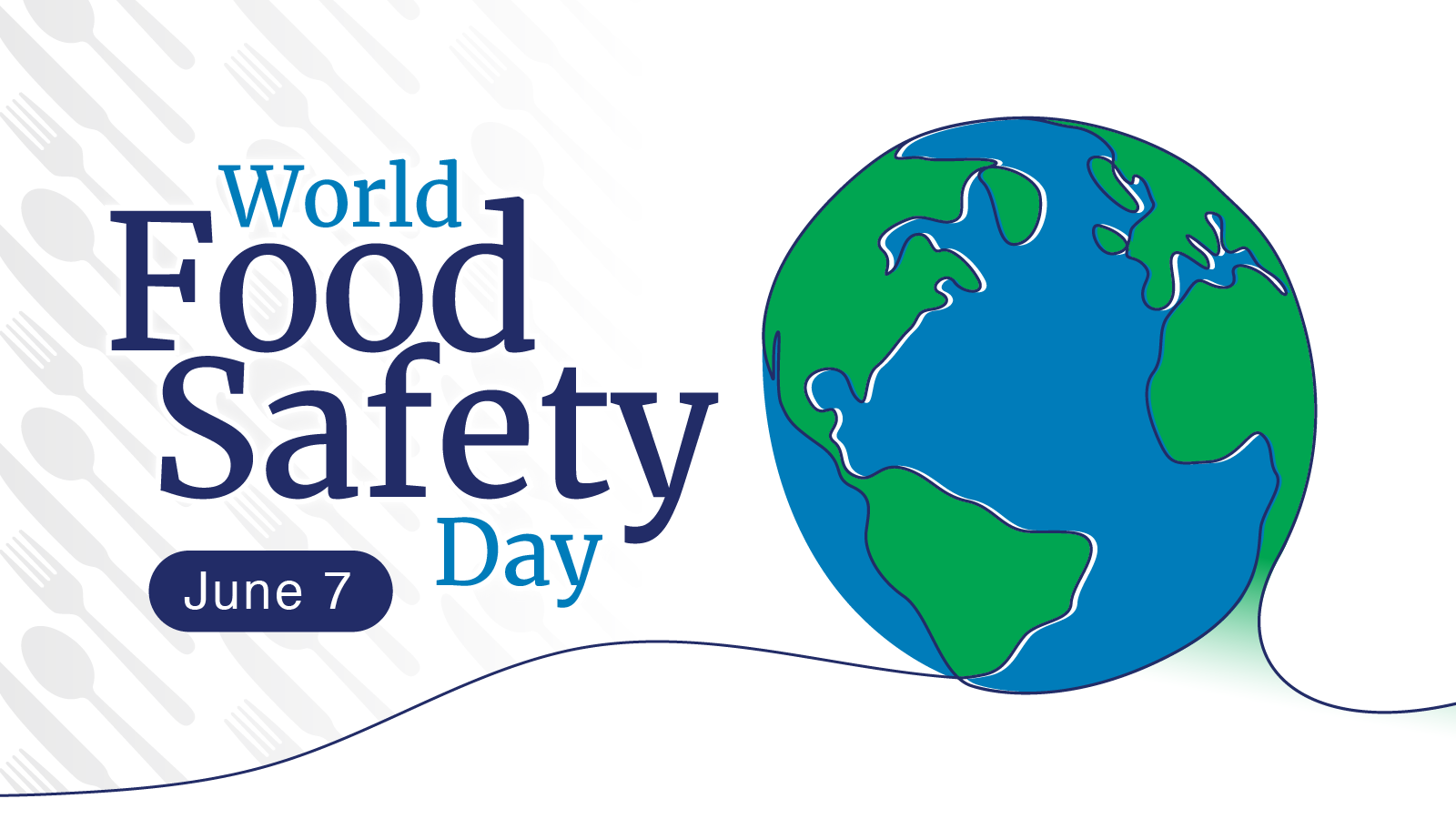Every year on June 7, the world observes World Food Safety Day — a day that highlights the importance of safe food practices in ensuring good health, preventing diseases, and promoting sustainable food systems. Celebrated globally and supported by the World Health Organization (WHO) and the Food and Agriculture Organization (FAO) of the United Nations, this day serves as a reminder that safe food is not a privilege — it’s a right.
Why Is World Food Safety Day Important?
Food safety refers to handling, preparing, and storing food in ways that prevent foodborne illness. Unsafe food can contain harmful bacteria, viruses, parasites, or chemicals, and is responsible for over 600 million cases of foodborne diseases annually, with children and the elderly being most at risk.
World Food Safety Day raises awareness about:
-
The risks of food contamination
-
The need for proper food handling and hygiene
-
The role of governments, producers, and consumers in food safety
-
The importance of food standards and inspections
Theme of World Food Safety Day 2025
Each year, the day carries a theme to spotlight current priorities. While the 2025 theme may vary, a relevant one could be:
"Food Safety: Everyone’s Business" — reinforcing the idea that safe food is the result of shared responsibility across the entire food chain.
Key Messages of the Day
-
Food safety saves lives – Preventing contamination protects people from illness.
-
Everyone has a role – From farmers and manufacturers to vendors and consumers.
-
Safe food supports economies – Strong food systems mean less food waste, more trust, and healthier populations.
-
Food safety equals food security – Unsafe food can lead to malnutrition and poor development, especially in children.
-
Food safety needs constant attention – It's not a one-time task but an everyday responsibility.
Common Food Safety Issues Around the World
-
Bacterial contamination (e.g., salmonella, E. coli)
-
Improper food storage leading to spoilage
-
Use of contaminated water in cooking
-
Pesticide and chemical residues in fruits and vegetables
-
Improper hygiene among food handlers
-
Expired or improperly labeled products
These problems can occur anywhere — from street food stalls to home kitchens to big food factories.
Tips for Practicing Food Safety at Home
You don’t need to be a food expert to keep your meals safe. Follow these simple steps:
🧼 1. Clean
-
Wash hands before and after handling food.
-
Clean all surfaces and utensils.
-
Rinse fruits and vegetables properly.
🔪 2. Separate
-
Keep raw meat, poultry, and seafood away from ready-to-eat foods.
-
Use separate cutting boards and knives.
🍳 3. Cook Thoroughly
-
Cook foods to safe internal temperatures (e.g., 75°C for most meat).
-
Reheat leftovers to steaming hot.
🧊 4. Chill
-
Refrigerate perishable items within 2 hours.
-
Keep your fridge at or below 5°C.
-
Don’t thaw food on the counter.
🧾 5. Check Labels
-
Always check the expiry date.
-
Read instructions for storage and preparation.
-
Avoid dented or leaking cans and packages.
How Is World Food Safety Day Celebrated?
Countries, schools, and organizations host events such as:
-
Food safety workshops
-
Clean cooking campaigns
-
Awareness rallies and quizzes
-
Public health messages on hygiene
-
School programs on hand washing and kitchen safety
-
TV shows, posters, and social media campaigns
The focus is on education, action, and collaboration to build a safer food environment.
Role of Different Stakeholders
👩🌾 Farmers
-
Use clean water for irrigation
-
Avoid overuse of pesticides
-
Ensure safe harvesting and storage
🏭 Food Manufacturers
-
Follow hygiene protocols and quality control
-
Label food correctly and truthfully
🍴 Vendors and Restaurants
-
Maintain kitchen cleanliness
-
Store ingredients at correct temperatures
-
Serve fresh and properly cooked food
👨👩👧👦 Consumers
-
Be informed and alert
-
Demand food safety and transparency
-
Practice good habits at home
🏛️ Governments
-
Enforce food safety laws
-
Inspect food businesses
-
Run awareness campaigns
-
Set standards for processing, labeling, and transportation
Food Safety and Sustainable Development
Safe food is critical for achieving UN Sustainable Development Goals (SDGs), especially:
-
Goal 2: Zero Hunger
-
Goal 3: Good Health and Well-being
-
Goal 12: Responsible Consumption and Production
A world with safe food is a world where people are healthier, economies are stronger, and waste is minimized.
Conclusion: Safe Food Today, A Healthy Tomorrow
World Food Safety Day is not just about preventing illness — it’s about creating trust in what we eat and building a healthier future for all. In a world of increasing food demand and growing supply chains, ensuring food safety is more critical than ever.
🌾 From farm to fork, every step matters. Let’s commit to making food safety a shared responsibility — because every bite should be safe, nutritious, and trusted.

